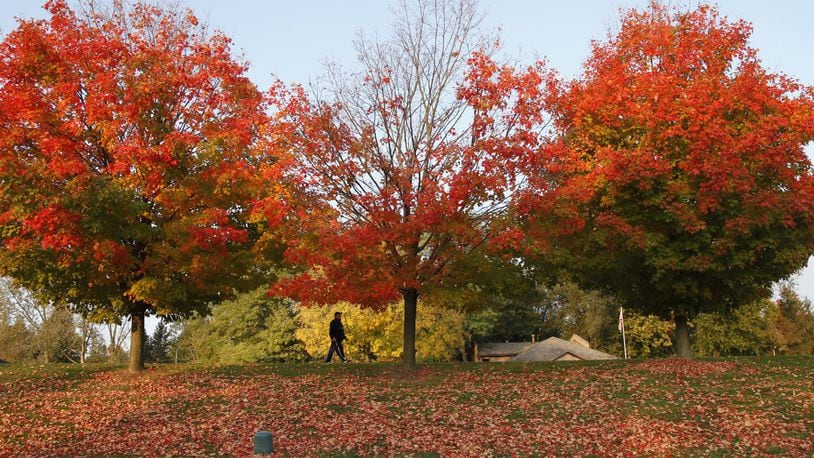But now, our weather has turned dry and unseasonably mild. We’ve also started to see some fall color over the last few weeks. The trees showing the most color right now are the buckeyes as well as some of the maples and walnuts. The Virginia creeper is also showing good red color.
Typically, to get the best fall color, we need near - or a bit above average rainfall during the growing season, and then dry and mild days along with cool, frost-free nights in the early fall. This year, our spring and early summer saw precipitation amounts soar well above normal. While the wet start of the growing season was good for trees, the sudden drying of late summer - and now into early fall may be causing a problem. Another concern is the well-above normal temperatures we’ve experienced now for much of the fall thus far. Even our nights have been relatively mild for the most part. Premature color has been spotted especially within and around cities and in areas where rainfall deficits have become more significant. This isn’t such great news for vivid fall color.
»MORE: Prepare for the stink bug onslaught
So, let’s review some chemistry that makes the color of leaves. First, the chlorophyll is the green stuff. As the tree grows throughout the spring and summer months, chlorophyll is constantly replaced in the leaves by sunlight keeping them green. As days start to get shorter, the green chlorophyll begins to break down by a chemical called carotenoid, which is always present in a leaf but is hidden by the chlorophyll. This will bring out the yellows and some orange colors.
Shades of red and purple are brought on by a different reaction that produces a chemical called anthocyanin. With bright, sunny days and cool, frost-free nights, trees rich in sugar, including maples, oaks, sweetgums, and dogwoods will develop this anthocyanin. This allows them to display these brilliant contrasting colors. If we don’t get enough sunny fall days, we typically have more of a yellowish fall. Cool nighttime temperatures help anthocynanins form, giving the brighter colors.
For the best fall display with a variety of vivid colors, we need to have adequate, but not too much rainfall in the summer - combined with cool, crisp, yet frost-free nights and sunny, low humidity days in the fall.
»MORE: What to know about sky events
Given our present weather conditions with the recent lack of rainfall combined with the well above average temperatures (we spent the first week of fall near or at 90 degrees), I would expect near or below average fall color. Many of the trees here in the Miami Valley have become stressed, causing not only an early change in color, but many leaves have started falling without even showing much color.
A slow, light but steady rainfall would be beneficial to brighten up our fall color, but too hard of rain with wind would likely bring down the stressed leaves before they can show much color.
I expect our fall color to peak between the second and third weeks of this month, about a week earlier than normal here in the Miami Valley. The color may be a bit more vivid in the northern and western sections of the Miami Valley (from Richmond, Ind. up to Wapakoneta) where there was more significant rainfall in the last two weeks. Any significant storm systems that produce gusty winds could bring down leaves too soon.
Eric Elwell is WHIO StormCenter 7 Chief Meteorologist. Contact him at eric.elwell@coxinc.com or follow him on Facebook and Twitter.
About the Author
